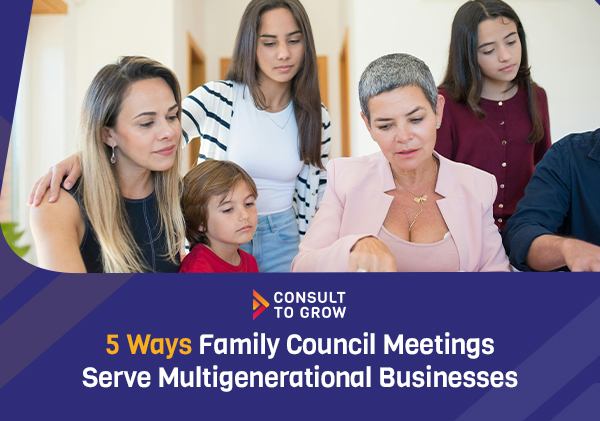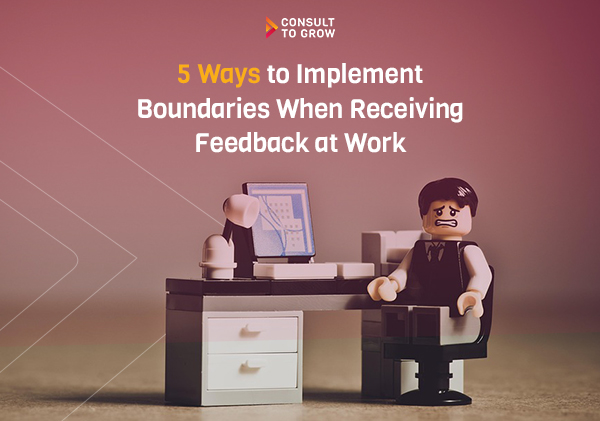Food cost is a key component in determining restaurant profitability. According to the annual Restaurant Industry Operations Report, food costs across surveyed restaurants generally average 32-33% of all food sales. However, this number shouldn’t be used to set individual restaurant goals. There is no single number that will predict profitability. Rather, factor in menu prices, cost of production, the market(s) you serve and more to determine your restaurant’s ideal food cost. This number has the power to make or break your business. And that’s why knowing how to correctly measure ideal food cost is essential.
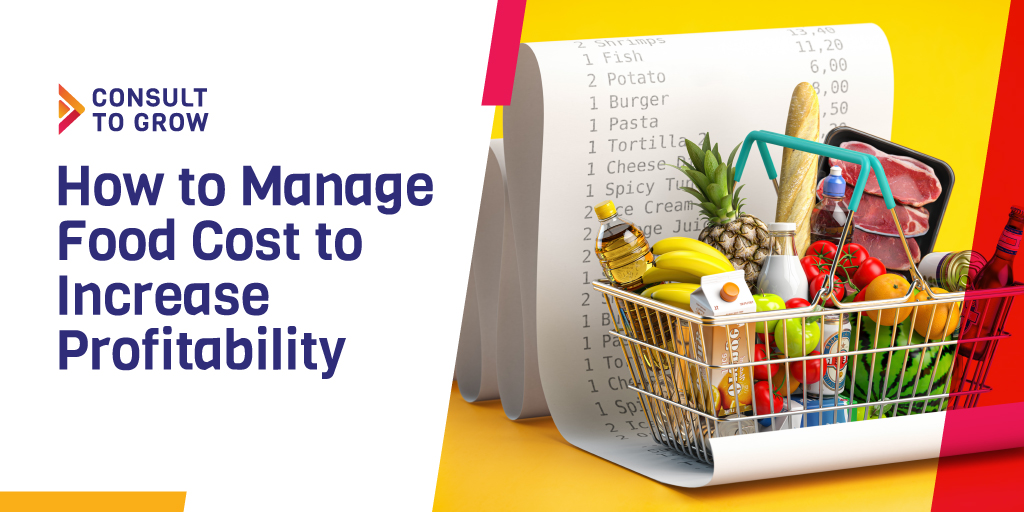
Understanding Ideal Food Cost
Ideal food cost is defined as ” the cost expected for a specific period, based on recipes and the number of times each menu item is sold.” Said differently by RestaurantOwner.com, “ideal cost is the projected cost for a given sales mix over a period of time, assuming proper portioning and normal waste and yields.”
Also referred to as target food cost or theoretical food cost, ideal food cost is determined by costing out your entire menu. In other words, it is based on the menu items you sell and when you sell them. Each ingredient has an exact cost. Taken together, they formulate the cost of the menu item. That cost multiplied by the number of units sold per week gives you your total weekly cost. Adding together all costs per item results in the weekly ideal cost, which can then be compared to the weekly actual cost to determine the weekly variance.
Make sure you track ideal costs over time. It is the best method known for tracking food cost targets.
Calculating Ideal Food Cost
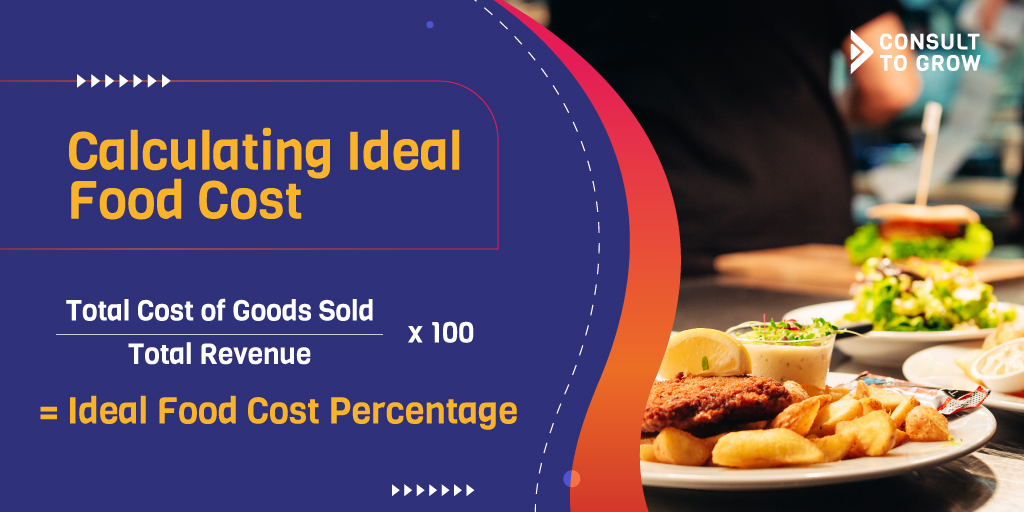
The ideal food cost is the percentage of revenue a restaurant should ideally or theoretically spend on the cost of goods sold (COGS) for food. To calculate it, follow these steps:
-
Determine your total cost of goods sold (COGS) for food for a given period (e.g., a week, month, or year). This includes the cost of all ingredients used in preparing dishes and any packaging, supplies, or other costs directly related to the food.
-
Determine your total revenue for the same period.
-
Divide your total COGS for food by your total revenue for the same period and multiply by 100 to get the ideal food cost percentage.
For example, if your total COGS for food is $10,000 for a month and your total revenue is $30,000 for the same month, the ideal food cost would be:
($10,000 / $30,000) x 100 = 33.33%
This means that your restaurant’s ideal food cost percentage should ideally be 33.33% of your total revenue.
6 Tips for Managing Ideal Food Cost
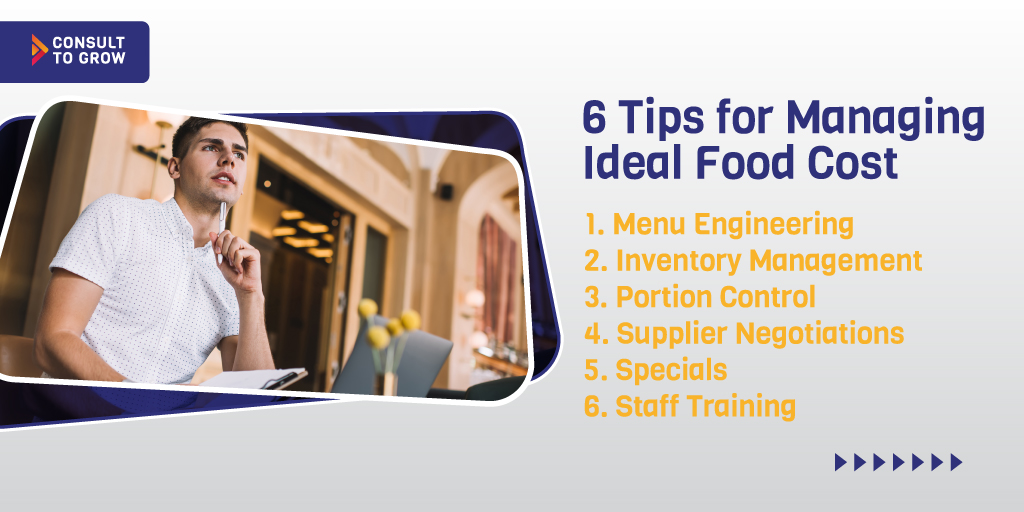
Now that you know your ideal food cost, it’s time to take a look at its management. Some strategies include:
-
Menu Engineering: Analyze your menu to identify high-profit items. Remove those that are not selling well. This can help you focus on the items that generate more revenue and reduce food costs.
-
Inventory Management: Implement an inventory management system to track the usage of ingredients and reduce wastage. This can help you ensure you are only ordering the necessary ingredients. It will also help you avoid overstocking, reducing spoilage.
-
Portion Control: Train your staff to use portion control when preparing dishes. Ensure the right amount of ingredients are being used and reduce waste.
-
Supplier Negotiations: Negotiate with your suppliers for better prices on ingredients to reduce the cost of goods sold and increase profitability.
-
Specials: Utilize specials to sell off any excess ingredients that may otherwise go to waste. This can help to reduce waste and increase profitability.
-
Staff Training: Train your staff on the importance of managing food costs and how to implement the strategies mentioned above. Ensure everyone is on the same page and working towards the same goal.
A restaurant can effectively manage food costs and increase profitability by implementing these strategies. It’s important to regularly review and analyze your operations to ensure that you are always optimizing your food cost and maximizing your revenue.
If you found this post useful, you may also like:
Restaurant Financial Benchmarks: How Do You Compare?
How to Manage Restaurant Labor Costs to Drive Unit-Level Profit


